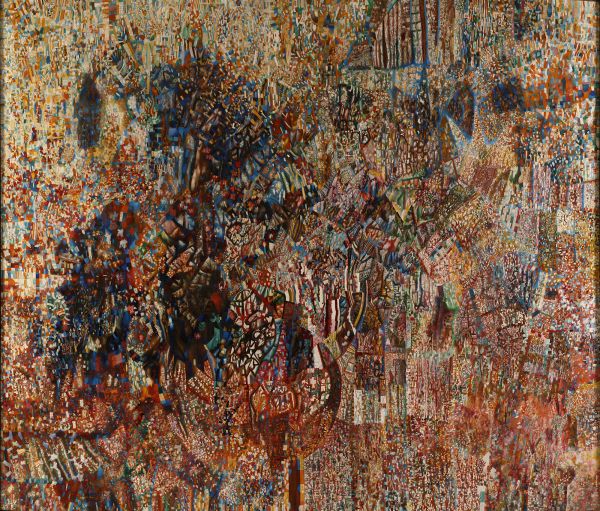|
|
Formula of Spring and Acting Forces. 1928–1929

Filonov Pavel,
Oil on canvas
250 x 285
State Russian Museum
Пост. в дар от сестры художника Е. Н. Глебовой в 1977
Annotation
Pavel Filonov was a renowned master of Russian avant-garde, one of the founders of nonobjective art. His Spring Formula shows a striving for generalized plasticity, depth of meaning, and versatility of symbols. A work of art should grow as any other living body in the nature. The very idea of spring is connected with growth, movement, awakening of nature. The composition of the painting is built from colourful atoms, as a living body that the artist sees from inside. P. Filonov developed an analytical art theory and gave his pupils the following advice: “Paint every atom with precision, meticulously inject colour into each atom you work on, let it sink in, as heat sinks into a body, let it be organically connected with the form, as the cells of a plant with a flower”. Speaking about the purpose of his work, the artist said: “The most important thing in every painting or drawing is a man’s mighty work on a thing that reveals his personality and immortal soul. I replace the complicated notion of “creativity” with the word “completeness”. It means that an artist should give all his will and effort to his work”. P. Filonov painted his colossal works with a thin brush starting from one side and gradually moving to the other one. Every stroke, every dot was for him a movement expressed in both form and colour.
Author's Biography
Filonov Pavel
Filonov, Pavel Nikolaevich
1882/83, Moscow -1941, Leningrad
Painter, graphic artist, theatrical designer, poet. Studied at painting studios in St Petersburg (1897-1901), Lev Dmitriyev-Kavkazsky''s studio (1913-08), School of Drawing, Society for the Encouragement of Artists (1893-1901) and under Vasily Savinsky and Jan Ciaglinskj at the Higher School of Art, Imperial Academy of Arts (1908-10). Contributed to exhibitions (from 1910). Founding member of the Union of Youth (1910). Founded the Made Pictures studio of painters and draughtsmen and published its manifesto (1914; second version published in 1923). Helped to design the sets and costumes for a production of Vladimir Mayakovsky: A Tragedy (1913). Wrote the poem Chant of Universal Flowering (1914-15). Headed the Department of General Ideology at the Museum of Artistic Culture (1923). Helped to write the statute of the Institute of Artistic Culture. Formed the Masters of Analytical Art (1923).

